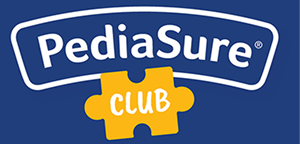Everyone wants their child to grow “normally.” But your pediatrician may or may not use the term normal to describe your child’s growth and development. You might hear “average” or “expected” to describe your child’s growth in height and weight. Regardless of whether the word is “normal” or “average,” what your doctor is referring to is how your child’s growth compares to the expected normal growth pattern exhibited by millions of healthy children the same age and sex.
Understanding growth charts
Growth Chart
Growth charts indicate average growth patterns for height (or length), weight, and head circumference. Infant growth charts are different for boys and girls. There are also different growth charts for different age groups. The most widely accepted standard growth chart shows the expected average growth of a population of healthy infants and children based on the statistics compiled and published by the World Health Organization(WHO).


Growth chart for boys, download PDF here.


Growth chart for girls, download PDF here.
View and download the World Health Organization growth charts for Canada here.
The growth chart displays curved lines that represent the expected pattern of gains in weight, height (length), and head circumference for children growing as expected. Each curved line represents what is known as a percentile.
Percentiles
What does percentile mean? For example, a child in the 75th percentile on height would be taller than 75 healthy kids and shorter than 25 of them.
Just because a child is in a lower or a higher percentile does not mean there’s a problem. The parents might be below average in stature, so their child might be also – this is called genetic potential. Doctors look at over time growth patterns – not just at one point in time. Your doctor will be able to determine if the percentile your child is following is any cause for concern.
When is there cause for concern?
There’s no specific answer for this question. You and your doctor are the ones who know enough about your child to determine if there is cause for concern over height and weight.
In general, the medical community does not consider it worrisome unless a child drops or increases by a significant amount in percentile. For example, a sharp drop in weight between check‐ups may prompt the doctor to discuss your child’s eating habits. It's important to keep in mind that eating healthy meals and receiving proper nutrients is essential for child growth and development.
Nutrition questionnaire
Nutri-eSTEP is an established nutrition screening tool developed by research dietitians for toddlers and preschoolers. Answer a few questions about your child’s diet and in less than 10 minutes you will get results on what is going well and where there may be room for improvement, as well as tips to help guide you. Feel free to share your results with your health care professional if you are concerned about your child’s eating habits.
For toddlers (18-35 months), click here.
For preschoolers (3-5 years), click here.






